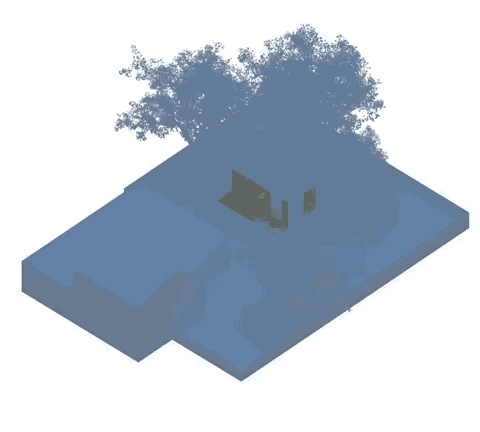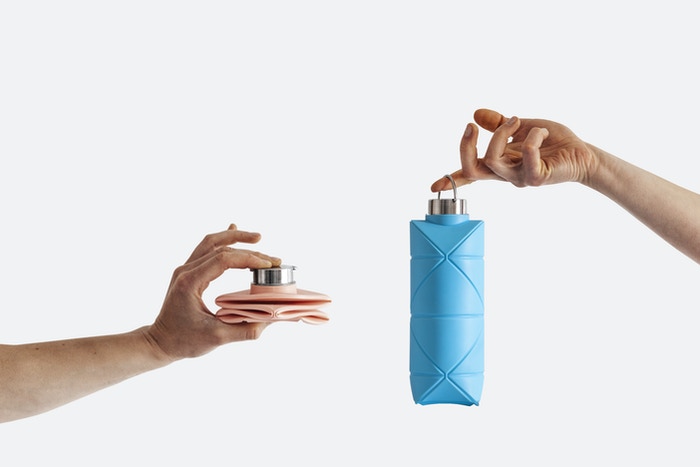Cover, a technology startup in Los Angeles, is bringing the design, engineering, and manufacturing of prefabs into the 21st century.
When Alexis Rivas was working for a high-end residential architecture firm in Toronto, he marveled at what big budgets–think between $40 and $100 million per project–could accomplish: beautiful finishes, custom millwork, door handles that had a subtle glow so you wouldn’t have any trouble finding them in the dark. But he was troubled by how inaccessible thoughtful design elements were for the typical home buyer.
“It was a shame that these details would be built once for one client,” Rivas says. So he decided to launch a prefab company and reinvent the design, engineering, and manufacturing process to offer a similar level of service as luxury architects but for far less.
Enter Cover, a Los Angeles-based prefab company that uses algorithmic software to design accessory dwelling units (essentially cottages, which range in size from one-room studios to two-bedroom houses) for just $250–about half the price of a refurbished iPhone 6s–and tens of thousands less than typical architects’ fees. (Construction, permitting, and site work is extra.)
Founded in 2014 and backed by venture capital funding, Cover currently has four employees: Rivas, an architect who has experience in residential design and prefab (he worked for Living Homes before founding Cover); Jemuel Joseph, the company’s cofounder and an architect with a specialty in computational and parametric design; an architect with experience in interior architecture; and a software engineer trained in machine learning.
“We’re focusing on technology, and that’s what’s allowing us to do something better and different from the prefab world,” Rivas says. “We’re redesigning the building system from the ground up with manufacturing in mind. We’re rethinking the factory, the materials, the assembly, and on-site installation, and that’s something no other prefab company has done.”
Cover, like many prefab companies before it, believes it’s staging a revolution when it comes to home building. But its specific market–accessory dwelling units, which are secondary structures built next to existing houses–raises the stakes. Cities across the country are experiencing a housing crisis, and backyard cottages, like what Cover offers, are being touted as an easy way to add density in a way that respects a neighborhood’s character.
REDESIGNING THE PREFAB DESIGN PROCESS
Cover thinks of itself more as a tech company than a prefab builder. A problem Rivas identified with most prefab companies is that they operate more or less like traditional home builders. They offer some standardized floor plans, but those plans ultimately have to be adapted because of variations in site conditions and clients’ different wants and needs. Additionally, the construction techniques are about the same traditional buildings except the work takes place within a factory instead of on-site. The process is more efficient, but only marginally so. Rivas realized that to make prefab cheaper and faster, he’d have to remove people from the design and building process–and use software instead.
So Cover offers customization at the outset through algorithmic design. Once customers begin the design process, Cover sends them a survey of about 50 to 100 questions to inform the design. It asks about lifestyle–how many people typically cook a meal and what appliances are must-haves?–and structural needs, like should they optimize one view and block another one? This is a typical procedure for most architects in the sense that they sit down with clients and ask the same questions, but here it’s computerized.
Energy efficiency is important to Cover so it uses modeling of a sun’s path to figure out window placement. Orienting a building to optimize cross-ventilation and take advantage of natural light is also a pretty standard practice for architects today, but Cover takes it a step further by creating more complex models about the exact effects of placing a window in a specific location and the ratio of solid to opaque surfaces–elements that affect temperature and light. Cover’s architects visit each site to note the specific conditions–the site’s grade, vegetation, what the neighboring houses are like–but also use GIS and zoning data from the city to get a better understanding of the building constraints on a specific site, like setbacks and maximum heights.
Here’s where the process really diverges from a typical architect consultation. The information is fed into a proprietary computer program, and the program processes the information to create hundreds of design iterations that meet all of the criteria. The overall aesthetic is modern and minimal–think bamboo cladding, glass-reinforced concrete floors, built-in cabinets, Sub-Zero and Wolf appliances, radiant heating and cooling, and details like outlets that are flush with a wall.
In addition to coming up with the actual floor plan, the software also creates all of the construction drawings and prices out manufacturing so that customers get a full understanding of what a specific design costs. This is all for $250. (After design comes the permitting process, which runs about $20,000.)
“We’re taking the traditional design and engineering process of creating several iterations, which typically takes weeks and months, and compressing it into a short period of time with software,” Rivas says. “It makes the process more accessible. There’s a lot more transparency and it’s a more frictionless experience for the client.”
A NEW MANUFACTURING MODEL
In addition to redesigning the prefab design process, Cover is also retooling manufacturing, which costs extra; the house’s final price depends on the actual design. The key here is precision. This reduces material expense and also makes the final assembly process easier and reduces surprises on site. With traditional construction, the slight imperfections in each material or component add up. Rivas has been on construction sites where the measurements have been close to a foot off, which requires rebuilding until it’s right.
Materials are an important part of the equation. Cover’s structures are made from steel, a material chosen for its strength, durability, lightness, and ability to be machined easily. The company’s fabrication line uses CNC machines and automated cutting tools to make the fabrication process quicker and more precise, which other prefab builders use, too. This type of machinery would be impossible to have on a building site. Cover also uses CATIA, a software program for manufacturing that’s primarily used in the automotive and aerospace industries and is rare in architecture and construction. This allows the company to have more detail and precision in design, engineering, and fabrication.
Cover essentially manufactures structurally insulated panels–also a fairly common prefab technique that treats a house like a kit of parts that gets assembled on-site–but also waterproofs them and fits them with electrical and plumbing systems–a detail that isn’t common to other prefab companies. Finishes, which are often the most laborious part of building a house, snap to the structure. The whole house assembles like Lego bricks on-site. “It’s more like putting together Ikea furniture than anything else,” Rivas says.
Cover estimates that the design stage takes about three days, the permitting and site survey takes between two and five months, and construction takes 12 weeks. Customers could get a Cover unit in as little as five months.
“[Prefab companies] are competing with general contractors, which is what everyone uses today to build homes,” Rivas says. “Contractors are able to offer a high level of customization on the floor plan, and prefab companies haven’t been able to offer that. By building a system from the ground up with versatility in mind, offering an infinite number of floor plans, and combining that with the software we’re writing to automate the design process, we’re able to compete [with general contractors] in a way that prefab hasn’t been able to do.”

Cover is still in its nascent stages and it’s only built one structure, which was fabricated in a shared space in Los Angeles. It recently purchased its own factory and has seven projects in the design phase. One is now in the permitting stage. The projects on the boards range from a $90,000 backyard office/lounge to a $300,000 unit that has a bedroom and a full kitchen and is sited on a hillside. Over time, Rivas expects the cost to go down. He likens his approach to Tesla. The automaker began with a $100,000 luxury sports car then was able to bring the cost of production down to sell a more attainable $35,000 vehicle.
“We’re using a First Principles approach–redesigning the whole process from design to sales to manufacturing and assembly to take advantage of modern technology all the way through,” Rivas says. “With computational software design, we’re able to offer an uncompromising product. It’s custom in floor plan and layout. It has the details you’d get in bespoke construction. The idea is to start off with a high-end, low-volume product and expand that and reinvest profit to reducing the costs and streamlining manufacturing.
AN ANSWER TO THE HOUSING CRISIS?
Cover’s factory will have a capacity of 100 ADUs per year, but that could change. In fact, the company is banking on it. Los Angeles was a strategic location for Cover. The city is in the middle of a housing and homeless crisis: There are an estimated 47,000 people living in shelters or on the street. The state of California recently made it easier to build accessory dwelling units, and Los Angeles lawmakers and housing advocacy groups have embraced this idea. The L.A. region is filled with low-density, single-family homes on lots large enough to accommodate additional units.
Prefabrication isn’t new. Algorithmic design isn’t new. Automated fabrication techniques aren’t new. But they’re coming together in a sophisticated way at Cover. That, paired with the sense of urgency to tackle the Los Angeles area’s housing crisis and the region’s openness to accessory dwelling units as a solution could spell success for Cover in a way that other prefab companies haven’t been able to attain.
While Los Angeles is the company’s initial focus, it might expand outside of the region in the future. The challenge will be executing on its promise, which is a tall order. Even when engineers, architects, and builders say the numbers work and believe in their models, things don’t go to plan, as was the case with a prefab tower in Brooklyn. If Cover is able to deliver on its aspiration, it might have cracked the code on designing and building backyard units.
This article originally appeared on Fast Company
Main photo by: Cover








Keep this going please, great job!